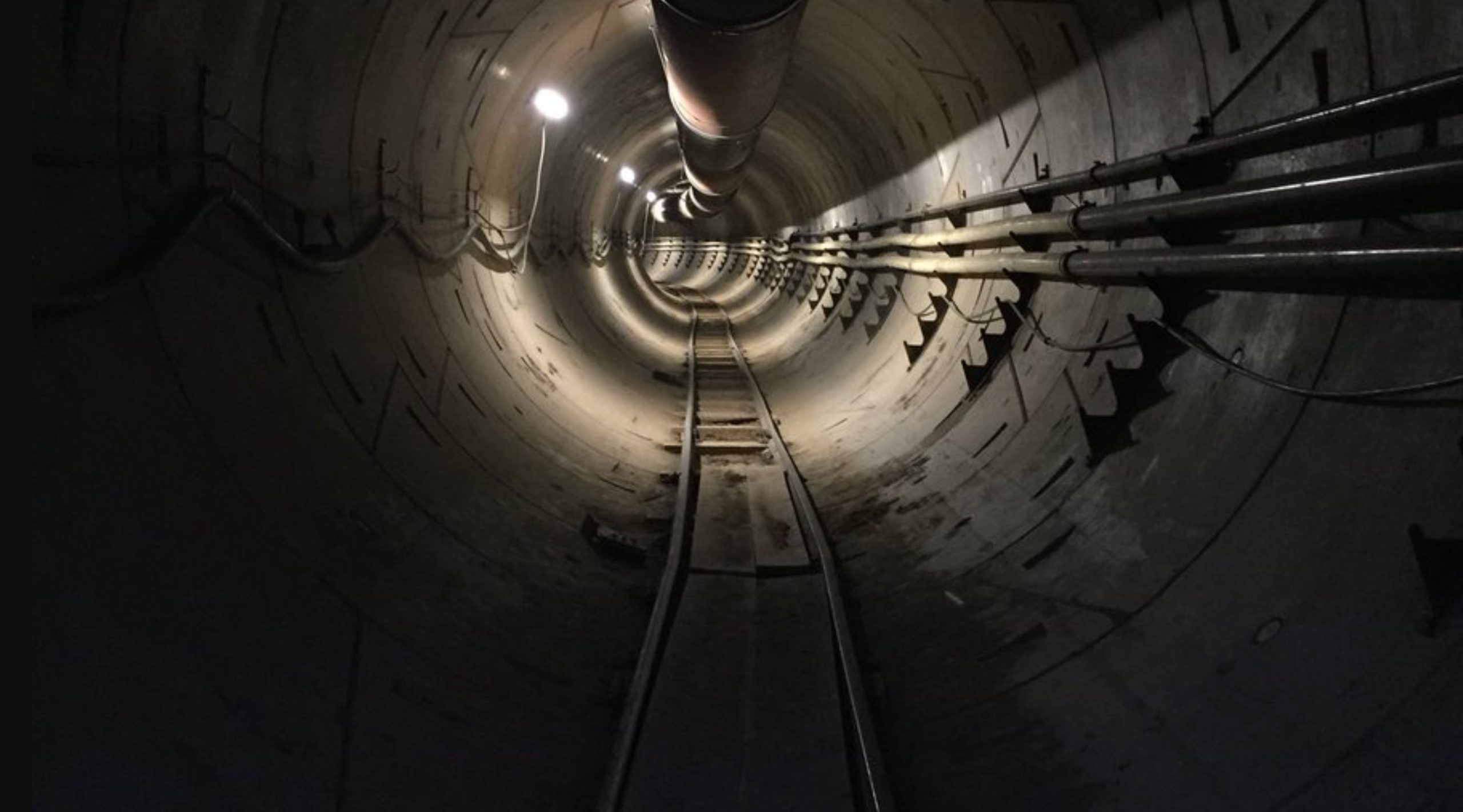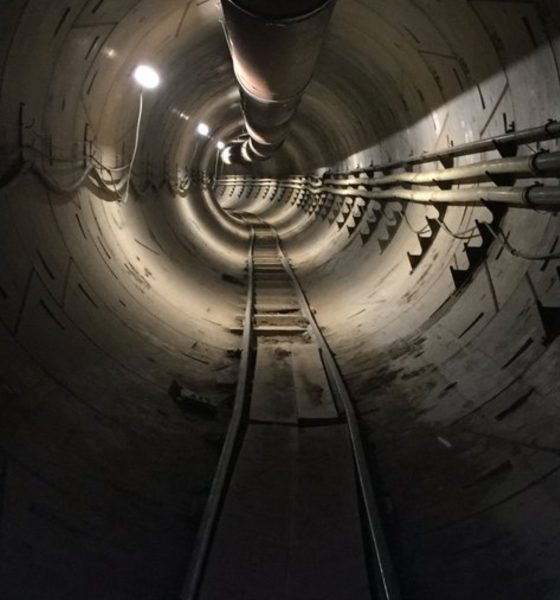

News
Elon Musk’s Boring Co. lays bold claim on SF’s new Transbay Tube project
Elon Musk recently stated that his tunneling startup The Boring Company is capable of building San Francisco’s second Transbay Tube at a fraction of the project’s estimated cost and time.
Conversations on Twitter about San Francisco’s planned tunnels started not long after Musk shared a post referencing China’s progress in infrastructure. The tweet ultimately led to a long conversation among the platform’s users, some of which brought up the issue of the Golden Gate city’s proposed second BART tunnel, which the city is currently planning to build at an estimated budget of $12-15 billion. Posting on the Twitter thread, a user named Paul Rand directly asked the SpaceX and Tesla CEO how much the Boring Company would charge for such a project.
Never one to shy away from a challenge, Elon Musk stated that his tunneling startup could build San Francisco’s second Transbay Tube way faster and far cheaper.
“Probably about a tenth of the cost and a fifth of the time.”
As noted in a San Francisco Chronicle report, the Golden Gate city is looking to build another BART tunnel that runs parallel to its existing Transbay Tube, which is 6 miles long (including the approaches from the nearest stations) and at some points 135 feet below sea level. If approved, the second Transbay Tube would be the city’s biggest Bay Area infrastructure project since the first BART system was built over 50 years ago. The second Transbay Tube is estimated to be completed by 2030, making it a 12-year project.
So, that article said the fix would be at $12 Billion+, what could The Boring Company do it for?
— Paul Rand (@Pewwer42) February 27, 2018
In a statement to the Chronicle, Jim Wunderman, CEO of the Bay Area Council, described the scope of the planned project.
“It’s going to be a huge investment. This cross-bay connection and its alignment are going to be very important. Since we’re at the beginning, we need to look at the big picture. We need to make sure we do it in a way that we don’t look back and say we should have done this differently,” he said.
A second Transbay Tube would offer several benefits to residents of San Francisco. For one, it could serve emerging neighborhoods and employment centers that are distant from stations. It could also serve as a backup for the first BART tunnels when the 50-year-old Transbay Tube needs repair. This would be a massive improvement from the current system, which requires a complete shutdown of the entire BART tunnels when emergencies or repairs happen.
As we noted in a previous report, The Boring Company was recently granted an early excavation permit by the local Washington, D.C. government. The approved site, located at Lot 53 New York Avenue, could become the first of many stations in Elon Musk’s planned NY-Phil-Balt-D.C. Hyperloop, a high-speed transport system that transports commuters through tunnels dug by the Boring Company.

News
Tesla FSD fleet is nearing 7 billion total miles, including 2.5 billion city miles
As can be seen on Tesla’s official FSD webpage, vehicles equipped with the system have now navigated over 6.99 billion miles.

Tesla’s Full Self-Driving (Supervised) fleet is closing in on almost 7 billion total miles driven, as per data posted by the company on its official FSD webpage.
These figures hint at the massive scale of data fueling Tesla’s rapid FSD improvements, which have been quite notable as of late.
FSD mileage milestones
As can be seen on Tesla’s official FSD webpage, vehicles equipped with the system have now navigated over 6.99 billion miles. Tesla owner and avid FSD tester Whole Mars Catalog also shared a screenshot indicating that from the nearly 7 billion miles traveled by the FSD fleet, more than 2.5 billion miles were driven inside cities.
City miles are particularly valuable for complex urban scenarios like unprotected turns, pedestrian interactions, and traffic lights. This is also the difference-maker for FSD, as only complex solutions, such as Waymo’s self-driving taxis, operate similarly on inner-city streets. And even then, incidents such as the San Francisco blackouts have proven challenging for sensor-rich vehicles like Waymos.
Tesla’s data edge
Tesla has a number of advantages in the autonomous vehicle sector, one of which is the size of its fleet and the number of vehicles training FSD on real-world roads. Tesla’s nearly 7 billion FSD miles then allow the company to roll out updates that make its vehicles behave like they are being driven by experienced drivers, even if they are operating on their own.
So notable are Tesla’s improvements to FSD that NVIDIA Director of Robotics Jim Fan, after experiencing FSD v14, noted that the system is the first AI that passes what he described as a “Physical Turing Test.”
“Despite knowing exactly how robot learning works, I still find it magical watching the steering wheel turn by itself. First it feels surreal, next it becomes routine. Then, like the smartphone, taking it away actively hurts. This is how humanity gets rewired and glued to god-like technologies,” Fan wrote in a post on X.
News
Tesla starts showing how FSD will change lives in Europe
Local officials tested the system on narrow country roads and were impressed by FSD’s smooth, human-like driving, with some calling the service a game-changer for everyday life in areas that are far from urban centers.

Tesla has launched Europe’s first public shuttle service using Full Self-Driving (Supervised) in the rural Eifelkreis Bitburg-Prüm region of Germany, demonstrating how the technology can restore independence and mobility for people who struggle with limited transport options.
Local officials tested the system on narrow country roads and were impressed by FSD’s smooth, human-like driving, with some calling the service a game-changer for everyday life in areas that are far from urban centers.
Officials see real impact on rural residents
Arzfeld Mayor Johannes Kuhl and District Administrator Andreas Kruppert personally tested the Tesla shuttle service. This allowed them to see just how well FSD navigated winding lanes and rural roads confidently. Kruppert said, “Autonomous driving sounds like science fiction to many, but we simply see here that it works totally well in rural regions too.” Kuhl, for his part, also noted that FSD “feels like a very experienced driver.”
The pilot complements the area’s “Citizen Bus” program, which provides on-demand rides for elderly residents who can no longer drive themselves. Tesla Europe shared a video of a demonstration of the service, highlighting how FSD gives people their freedom back, even in places where public transport is not as prevalent.
What the Ministry for Economic Affairs and Transport says
Rhineland-Palatinate’s Minister Daniela Schmitt supported the project, praising the collaboration that made this “first of its kind in Europe” possible. As per the ministry, the rural rollout for the service shows FSD’s potential beyond major cities, and it delivers tangible benefits like grocery runs, doctor visits, and social connections for isolated residents.
“Reliable and flexible mobility is especially vital in rural areas. With the launch of a shuttle service using self-driving vehicles (FSD supervised) by Tesla in the Eifelkreis Bitburg-Prüm, an innovative pilot project is now getting underway that complements local community bus services. It is the first project of its kind in Europe.
“The result is a real gain for rural mobility: greater accessibility, more flexibility and tangible benefits for everyday life. A strong signal for innovation, cooperation and future-oriented mobility beyond urban centers,” the ministry wrote in a LinkedIn post.
News
Tesla China quietly posts Robotaxi-related job listing
Tesla China is currently seeking a Low Voltage Electrical Engineer to work on circuit board design for the company’s autonomous vehicles.

Tesla has posted a new job listing in Shanghai explicitly tied to its Robotaxi program, fueling speculation that the company is preparing to launch its dedicated autonomous ride-hailing service in China.
As noted in the listing, Tesla China is currently seeking a Low Voltage Electrical Engineer to work on circuit board design for the company’s autonomous vehicles.
Robotaxi-specific role
The listing, which was shared on social media platform X by industry watcher @tslaming, suggested that Tesla China is looking to fill the role urgently. The job listing itself specifically mentions that the person hired for the role will be working on the Low Voltage Hardware team, which would design the circuit boards that would serve as the nervous system of the Robotaxi.
Key tasks for the role, as indicated in the job listing, include collaboration with PCB layout, firmware, mechanical, program management, and validation teams, among other responsibilities. The role is based in Shanghai.
China Robotaxi launch
China represents a massive potential market for robotaxis, with its dense urban centers and supportive policies in select cities. Tesla has limited permission to roll out FSD in the country, though despite this, its vehicles have been hailed as among the best in the market when it comes to autonomous features. So far, at least, it appears that China supports Tesla’s FSD and Robotaxi rollout.
This was hinted at in November, when Tesla brought the Cybercab to the 8th China International Import Expo (CIIE) in Shanghai, marking the first time that the autonomous two-seater was brought to the Asia-Pacific region. The vehicle, despite not having a release date in China, received a significant amount of interest among the event’s attendees.








